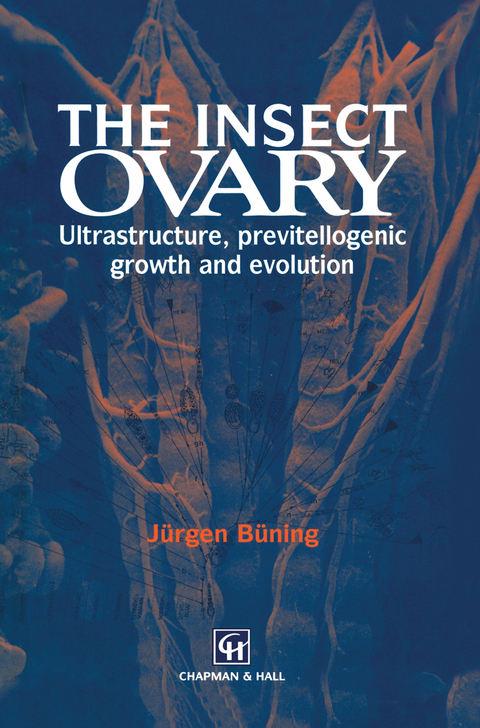
The Insect Ovary
Ultrastructure, previtellogenic growth and evolution
Seiten
1994
Chapman and Hall (Verlag)
978-0-412-36080-0 (ISBN)
Chapman and Hall (Verlag)
978-0-412-36080-0 (ISBN)
This book will give an overview of insect ovaries, showing the diversities and the common traits in egg growth processes. The answers to questions about early pattern formation raised new questions about the architecture of ovaries and the growth of eggs within these ovaries.
This book will give an overview of insect ovaries, showing the diversities and the common traits in egg growth processes. The idea to write this book developed while looking at the flood of information which appeared in the early 1980s on early pattern formation in Drosophila embryos. At this time a significant breakthrough was made in studies of this little fly, combining molecular biological methods with classical and molecular genetics. The answers to questions about early pattern formation raised new questions about the architecture of ovaries and the growth of eggs within these ovaries. However, by concentrating only on Drosophila it is not possible to form an adequate picture of what is going on in insect ovaries, since the enormous diversity found among insects is not considered sufficiently. Almost forgotten, but the first to study the architecture of ovaries, was Alexander Brandt writing in 1878 in aber das Ei und seine Bildungsstaette (On the egg and its organ of development). More than 100 years later, a series of ten books or more would be required to survey all the serious informa tion we have today on insect oogenesis. Thus, this book is a personal selection and personal view on the theme, and the authors must be excused by all those scientists whose papers could not be included. The book briefly describes the ectodemes, i. e.
This book will give an overview of insect ovaries, showing the diversities and the common traits in egg growth processes. The idea to write this book developed while looking at the flood of information which appeared in the early 1980s on early pattern formation in Drosophila embryos. At this time a significant breakthrough was made in studies of this little fly, combining molecular biological methods with classical and molecular genetics. The answers to questions about early pattern formation raised new questions about the architecture of ovaries and the growth of eggs within these ovaries. However, by concentrating only on Drosophila it is not possible to form an adequate picture of what is going on in insect ovaries, since the enormous diversity found among insects is not considered sufficiently. Almost forgotten, but the first to study the architecture of ovaries, was Alexander Brandt writing in 1878 in aber das Ei und seine Bildungsstaette (On the egg and its organ of development). More than 100 years later, a series of ten books or more would be required to survey all the serious informa tion we have today on insect oogenesis. Thus, this book is a personal selection and personal view on the theme, and the authors must be excused by all those scientists whose papers could not be included. The book briefly describes the ectodemes, i. e.
1 Introduction.- 2 The ovary of Entognatha (by S. Bilinski, Krakow).- 3 The ovary of Ectognatha, the Insecta s. str..- References.- Species index.
| Erscheint lt. Verlag | 31.7.1994 |
|---|---|
| Zusatzinfo | X, 400 p. |
| Verlagsort | London |
| Sprache | englisch |
| Maße | 155 x 235 mm |
| Themenwelt | Naturwissenschaften ► Biologie ► Evolution |
| Naturwissenschaften ► Biologie ► Zoologie | |
| ISBN-10 | 0-412-36080-2 / 0412360802 |
| ISBN-13 | 978-0-412-36080-0 / 9780412360800 |
| Zustand | Neuware |
| Haben Sie eine Frage zum Produkt? |
Mehr entdecken
aus dem Bereich
aus dem Bereich
Komplette Neuübersetzung. Mit einem Nachwort von Josef H. Reichholf.
Buch | Hardcover (2018)
Klett-Cotta (Verlag)
48,00 €
Wie die Vernichtung der Arten unser Überleben bedroht - Der …
Buch | Softcover (2023)
Penguin (Verlag)
15,00 €


